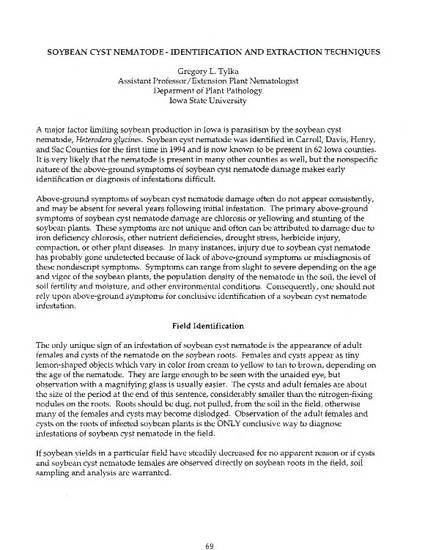
A major factor limiting soybean production in Iowa is parasitism by the soybean cyst nematode, Heterodera glycines. Soybean cyst nematode was identified in Carroll, Davis, Henry, and Sac Counties for the first time in 1994 and is now known to be present in 62 Iowa counties. It is very likely that the nematode is present in many other counties as well, but the nonspecific nature of the above-ground symptoms of soybean cyst nematode damage makes early identification or diagnosis of infestations difficult. Above-ground symptoms of soybean cyst nematode damage often do not appear consistently, and may be absent for several years following initial infestation. The primary above-ground symptoms of soybean cyst nematode damage are chlorosis or yellowing and stunting of the soybean plants. These symptoms are not unique and often can be attributed to damage due to iron deficiency chlorosis, other nutrient deficiencies, drought stress, herbicide injury, compaction, or other plant diseases. In many instances, injury due to soybean cyst nematode has probably gone undetected because of lack of above-ground symptoms or misdiagnosis of these nondescript symptoms. Symptoms can range from slight to severe depending on the age and vigor of the soybean plants, the population density of the nematode in the soil, the level of soil fertility and moisture, and other environmental conditions. Consequently, one should not rely upon above-ground symptoms for conclusive identification of a soybean cyst nematode infestation.
Available at: http://works.bepress.com/gregory-tylka/240/
